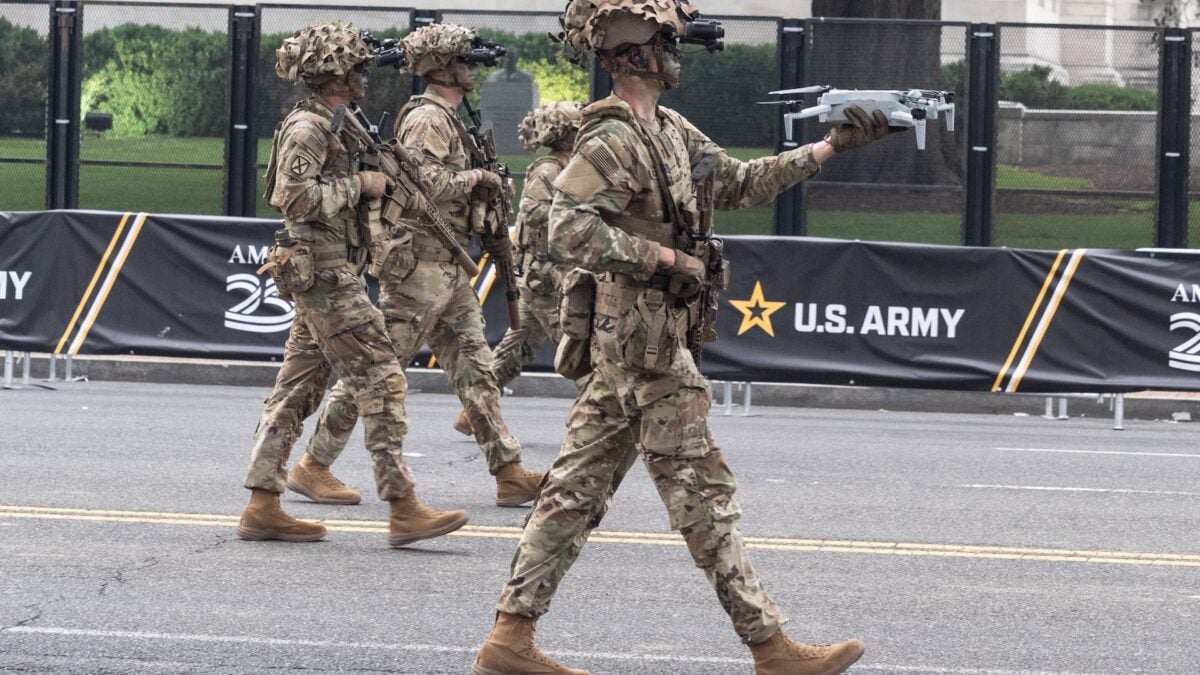If you’re working in Big Tech and looking to make an exit, the Army is waiting with open arms. Someone’s gotta build the tech to drop these bombs, after all. Task and Purposereportsthat the Army’s Talent arm has launchedDetachment 201, an initiative to pull technology professionals into the military’s ranks—the latest in a growing pipeline between Silicon Valley and the U.S. Armed Forces.
The Detachment 201 effort has put out the call for “top-tier, uniquely skilled technology professionals” who want to help in “fortifying the Army’s defenses against rapidly evolving threats.” The program is specifically targeting “senior technologists from the private sector” who can jump into the Army ecosystem and get it up to speed with modern tech. The program claims its aim is “bridging the commercial-military divide.” One might wonder if perhaps those things are divided for a reason! Hard to say for sure.
This program has been in the works for a bit now, and given its first bit of public prominence when Meta Chief Technology Officer Andrew Bosworthannouncedthat he was accepting a direct commission as a Lieutenant Colonel in the U.S. Army Reserve as part of the effort. Bosworthstatedthat Detachment 201 (named after theHTTP codethat indicates a request has led to the creation of a resource) will “serve as technical experts advising the Army’s modernization efforts.”
Bosworth wasjoinedby Palantir CTO Shyam Sankar, OpenAI’s chief product officer Kevin Weil, and former OpenAI chief research officer Bob McGrew as lieutenant colonels of the effort. The launch of the Detachment 201 recruitment page marks the start of public outreach, which is targeting other Army-curious employees of tech firms like the ones from which the new senior officers come.According to Task and Purpose, the recruitment page has received about 150 resumes so far. Gizmodo reached out to the Army for an update on its efforts but did not receive a response.
It’s not like the connection between Silicon Valley and West Point is a particularly new one. Big Tech has been raking in money from military contracts fordecades, and the ties have only grown tighter in recent years. Between 2018 and 2022, as much as$53 billionwent to Amazon, Google, and Microsoft alone—and venture capitalists clearly see dollars when they look at those deals, becausemore than $100 billion reportedly got poured into defense startupsbetween 2021 and 2023. The second Trump administration has dropped the pretenses and allowed tech firms like Palmer Luckey’s Anduril toland huge defense contractsafter pouring cash into Trump’s campaign coffers. We’re probably not far from an avalanche of “Why I’m leaving San Francisco for the Pentagon” essays from tech executives.
Get the best tech, science, and culture news in your inbox daily.
News from the future, delivered to your present.
Please select your desired newsletters and submit your email to upgrade your inbox.
Sure, but let's see these models medal on a 100-yard dash.
Jeep maker Stellantis says it's expecting a $2.7 billion loss.
The most powerful artificial intelligence company in the world just admitted it needs help from one of its biggest rivals to stay afloat.
The lawsuit had been ongoing for many years and would have forced top-level executives to speak before the court.
You can just say no. You don't have to do any of this crap.
With a newborn at home, a former top engineer details the grueling, 7-week sprint that pushed a small team to its absolute limit to ship a world-changing product.



 Motivational
Motivational 22 Jul, 2025
22 Jul, 2025 Charles Diaz
Charles Diaz